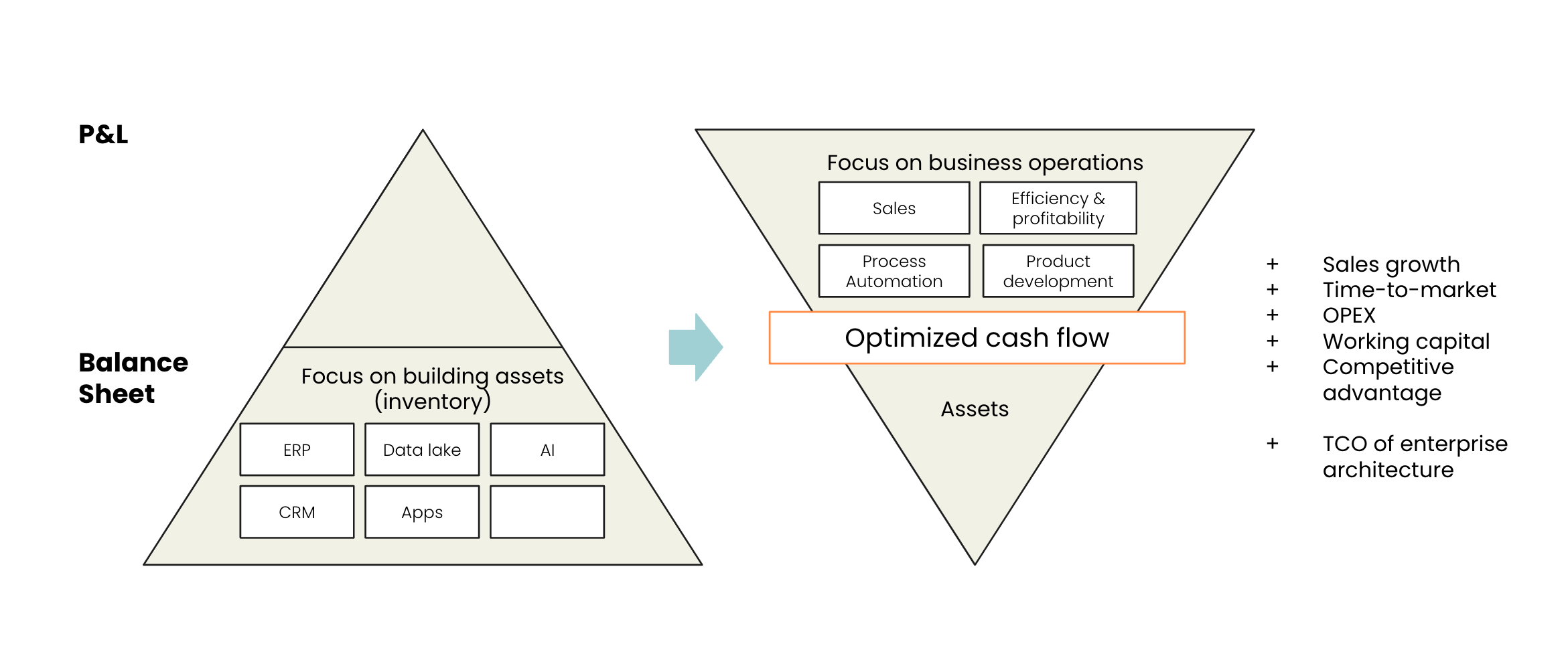How CFOs drive organisational efficiency: key insights from roundtable discussion
CFOs play a pivotal role in driving organisational efficiency, optimising resources, processes, and operations to maximise productivity and profitability. To delve into this crucial topic, we recently hosted a roundtable together with Melkki, where CFOs gathered to discuss and share their experiences regarding the building blocks of efficiency, KPI-driven practices, and the role of technology in enhancing organisational efficiency.
In this blog post, we will explore the key insights and highlights from this insightful event, providing valuable takeaways for CFOs and finance professionals seeking to drive efficiency within their organisations.
Measuring impact of IT investments
During the roundtable, the discussion revolved around the challenge of measuring the impact of IT investments. Participants noted that while there are often gate checks before implementing IT projects, there is a lack of post-project evaluation to determine if the desired results were realised.
A suggestion was made to include a review after implementation to assess the actual outcomes. Additionally, we presented a hypothesis that too often digital investments are not understood like other investments where in the end, the role of assets is to generate revenue, improve EBIT or optimise cash flow. Investments are project-driven and after the project, value is "stored" in the balance sheet instead of getting the maximum business outcome from the existing assets.
What if investments in digitalisation were considered like any other investments?
Defining efficiency in reality
Efficiency versus flexibility (in the sense of variety in tools) emerged as a key point of discussion. Participants debated whether everything should be condensed into a single system or if flexibility should be prioritised, allowing for a variety of tools and solutions. The concept of a "single source of truth" was also emphasised, meaning the importance of accurate and consistent data across the organisation.
In the debate between efficiency and flexibility, it was concluded that they are not mutually exclusive. Evaluating the benefits of multiple similar systems from a resource efficiency perspective can be difficult to assess and quantify. Benefits of flexibility become tangible in the business processes and their flow efficiency.
Quantifying impact on EBITDA
The attendees expressed interest in quantifying the impact of process or system changes on EBITDA, i.e. profitability, before implementing them. While it may be easier to quantify the value of physical assets like machinery, digital investments pose a challenge.
Cost optimisation framework from Melkki – Practical approach to cost reduction
Process mining was highlighted as a tangible solution to bring visibility into current process inefficiencies and estimate the cost of these inefficiencies – something all participants hoped to improve on. However, participants acknowledged that addressing these inefficiencies would require additional work and investment.
The role of technology and automation
The discussion on technology revolved around system architecture, specifically the debate between monolithic systems and composable solutions. Participants explored which areas should remain untouched and where custom solutions could be adopted.
Automation was identified as a catalyst for efficiency improvement. By combining automation with efficient processes, organisations can unlock the full potential of efficiency gains and drive sustainable growth – instead of just cutting costs in uncertain economic times.
One concrete challenge discussed in the roundtable was the different ways of operating in various countries. For example, M&A transactions can be very time-consuming due to complex system architectures. Such situations have led to the use of multiple systems covering similar needs, and while this is not optimal, having just one system has proven to be difficult in practice. One way to start solving such issues is to audit the enterprise architecture. It provides valuable insights into the current business IT infrastructure, and helps streamline the system architecture.
Conclusion
The roundtable discussion provided valuable insights into how CFOs drive organisational efficiency. Participants emphasised the need for post-implementation evaluation of IT investments and automation was identified as a catalyst for efficiency improvement. Process mining was seen as a practical solution to identify inefficiencies, while the debate between monolithic and composable system architecture highlighted the need for thoughtful decision-making. By embracing these insights, CFOs can lead their organisations towards enhanced efficiency, streamlined processes, and improved financial performance in today's dynamic business landscape.


